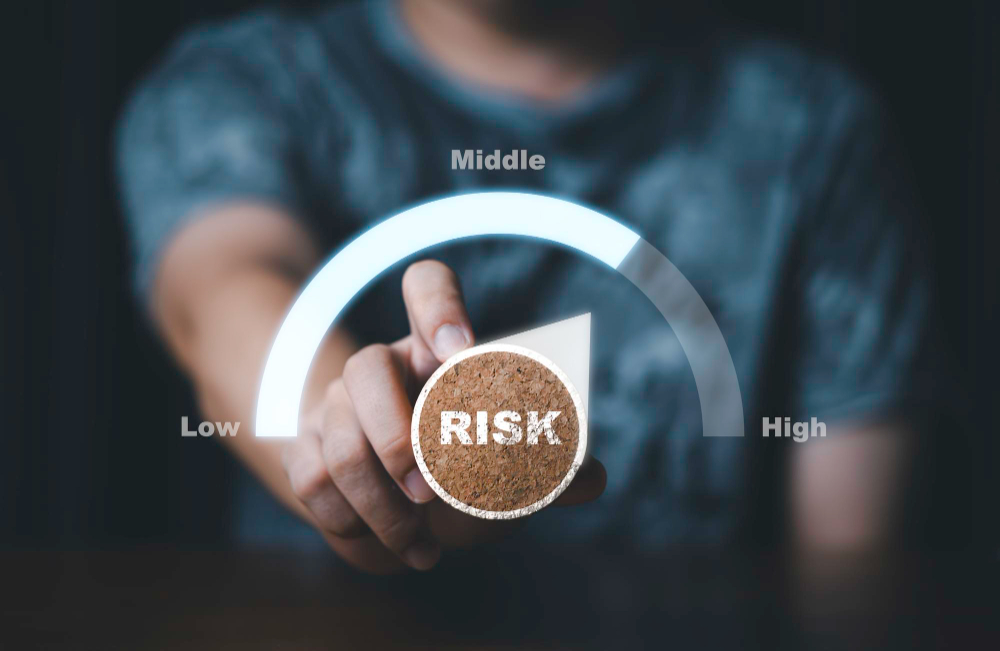Strategic management in companies is a fundamental part of business success. In a world of constant uncertainty, organizations need to be prepared to deal with unforeseen challenges and make informed decisions. This is where the risk management cycle comes in.
In this blog, we will explore the stages of the risk management cycle, from identifying inherent risks to making informed decisions. You will discover how this process plays an essential role in ensuring organizational success. Enjoy reading!
O que você vai encontrar neste blog:
ToggleBut first, what is risk management?

Before delving into the risk management cycle, it’s crucial to understand the concept of risk management at its core.
Risk management can be defined as a process in which an organization identifies, assesses, and controls risks that may threaten the achievement of its objectives and goals. These corporate risks can take various forms, encompassing financial, operational, strategic, and other categories that may impact the organization’s success.
Understand what the risk management cycle is
Now that you know the concept of risk management let’s delve into the risk management cycle.
The risk management cycle plays a central role in this process. This methodology encompasses a continuous approach that empowers organizations to identify, assess, mitigate, and monitor risks that may impact their objectives.
Looking for risk management software? Get to know Belt By Actio!
8 stages of the risk management cycle

1- Risk Identification
The first stage of the risk management cycle is identifying all potential risks that the organization may face. This includes internal risks, such as operational issues, and external risks, such as market changes.
2- Risk Assessment
After identification, risks are assessed for their probability and impact. This action allows for prioritizing the most critical risks that require immediate attention.
3- Risk Mitigation
With identified inherent risks, it’s time to develop strategies to mitigate them. This stage may involve implementing policies, internal control processes, or transferring risks through insurance.
4- Risk Monitoring
The risk management cycle is not a one-time process but continuous. Constant monitoring is essential to ensure that mitigation strategies work effectively and to identify new emerging risks.
5- Communication and Consultation
This stage involves effective communication of identified risks and mitigation strategies to relevant stakeholders. This action is crucial to ensure that everyone is aware of the risks and the actions taken.
6- Monitoring and Review
Once mitigation strategies are implemented, it’s essential to continuously monitor and review progress and effectiveness. This allows adjustments as necessary.
7- Record and Documentation
Proper documentation of all stages of the risk management cycle is crucial. This action provides a history of activities and decisions made.
8- Learning and Continuous Improvement
Finally, the last stage involves learning from experience and using that knowledge to improve the risk management process in the future. This step helps organizations adapt to constantly evolving risks.
The importance of the risk management cycle

Risk management plays a fundamental role in ensuring that organizations are adequately prepared to deal with unexpected challenges and seize opportunities. Below are some of its benefits.
1- Informed Decision-Making
By identifying and assessing risks, organizations can make data-informed decisions, preventing impulsive decisions that may harm long-term success.
2- Financial Protection
Effective risk mitigation protects an organization against substantial financial losses, particularly relevant in volatile markets.
3- Compliance with Regulations
Many organizations are subject to strict regulations. The risk management cycle helps ensure compliance, avoiding legal penalties.
4- Continuous Improvement
Constant monitoring and continuous learning allow organizations to identify areas needing improvement and adjustments in their processes.
Introducing Belt by Actio – Risk Management Software

Due to the extreme importance of corporate risk management, Actio, a Falconi group company, has developed Belt by Actio; software designed to meet your organization’s needs. With centralized communication, this software can be a valuable tool for tracking actions, creating risk matrices, mitigation plans, and more.
Success stories, such as that of the Oswaldo Cruz Hospital, already use risk management software to enhance business performance. Belt by Actio enables the creation of better plans to reduce risks and implement controls that truly work. Don’t miss the opportunity to improve your business’s competitive advantage.
Frequently Asked Questions
1- What is the validity of a risk management program?
The validity of a risk management program can vary, but it is recommended to review and update it periodically to ensure its effectiveness and relevance. The frequency of this review depends on changes in the organization’s circumstances and business environment.
2- What are the main risks faced by organizations?
Risks can be financial, operational, strategic, and compliance-related, among others.
3- Who is responsible for risk management in an organization?
Risk management is a shared responsibility and is generally led by a risk director or a risk management committee.
4- How does the risk management cycle evolve?
The cycle should be regularly reviewed and adjusted as the organization grows and risks change.
5- What happens if an organization does not conduct risk management?
Failure to conduct risk management can lead to financial losses, legal penalties, and damage to the company’s reputation.
Conclusion
The risk management cycle plays an essential role in ensuring the sustainability and success of organizations. Therefore, understanding its stages and importance is crucial to face the challenges of a constantly changing world. Don’t wait any longer to implement risk management in your strategy and be ready for the future.
Don’t forget to follow Actio on Instagram, LinkedIn, and Facebook.
Did you like the content? Tell me in the comments.








